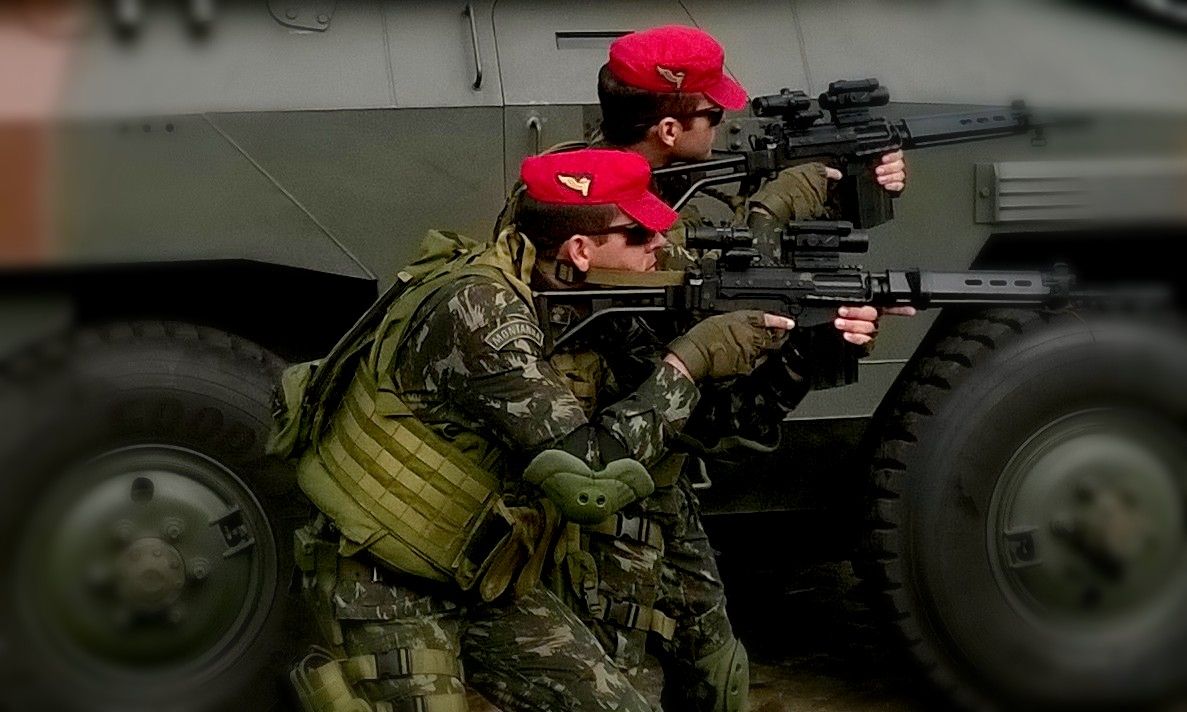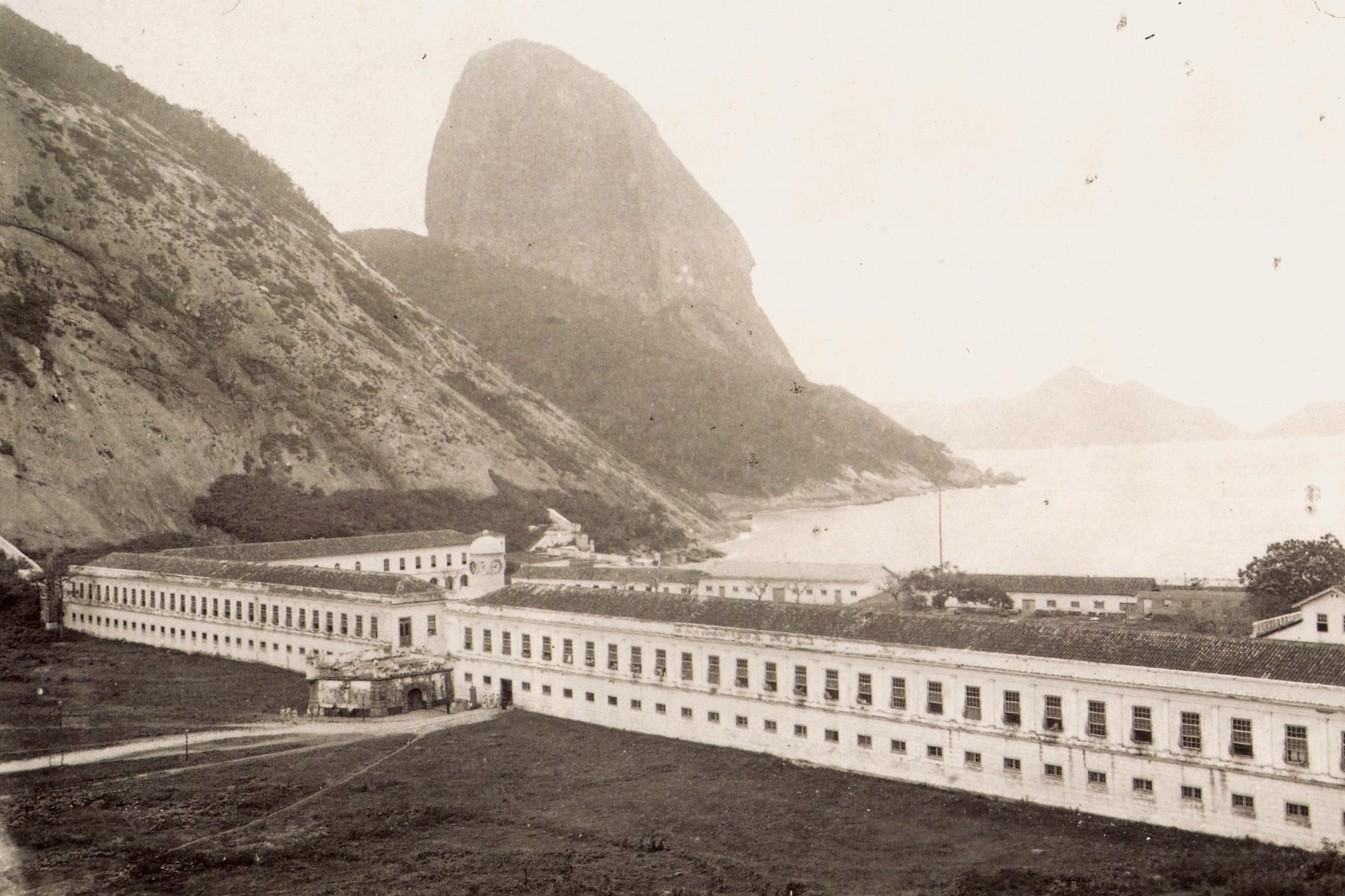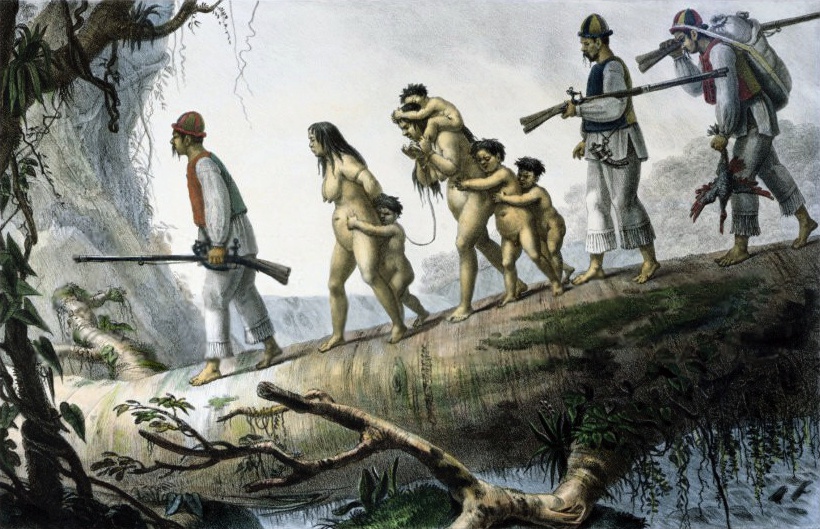|
Brazilian Cavalry
The Brazilian cavalry is one of the branches that make up the Brazilian Army. It operates in Vehicle armour, armored vehicles and, like the infantry, has the role of directly confronting the enemy, but with distinct missions such as reconnaissance and vanguard. It is organized into regiments and Squadron (army), squadrons, which are equivalent to the infantry's battalions and Company (military unit), companies. Its main types are tank (Leopard 1 and M60 tank, M60), mechanized (with wheeled vehicles — EE-9 Cascavel, EE-11 Urutu and VBTP-MR Guarani), armored (with tracked vehicles — tanks and the M113 armored personnel carrier, M-113) and guard (on horseback). Its troops serve in vehicle crews or as fusiliers on board, who can also fight on foot. Brazil has had cavalry on horseback since the Colonial Brazil, colonial period, standing out in the South Region, Brazil, South. It had different forms and origins, such as the social elite in the ''Milícias'' and ''Ordenanças'', th ... [...More Info...] [...Related Items...] OR: [Wikipedia] [Google] [Baidu] [Amazon] |
Manuel Luís Osório, Marquis Of Erval
Manuel Luís Osório, Marquis of Erval (May 10, 1808 – October 4, 1879) was a Brazilian military officer, monarchist and politician. A member of the Imperial Army at the age of fifteen, he climbed all the posts of the military hierarchy of his time thanks to the soldier attributes that consecrated him as "The Legendary". He participated in the main military events of the late nineteenth century in the Río de la Plata region and is considered a hero of the Paraguayan War. He was declared patron of the Cavalry Branch of the Brazilian Army in 1962. Biography Early life Manuel Luís Osório was born on 10 May 1808, in lands that belonged to the village of Nossa Senhora da Conceição do Arroio (Rio Grande do Sul). Osório was raised on his maternal grandfather's farm. His father, Manuel Luís da Silva Borges, son of the Azorean descendant couple Pedro Luís and Maria Rosa da Silveira, both native of the parish of Nossa Senhora da Conceição da Lagoa, on the island of Santa ... [...More Info...] [...Related Items...] OR: [Wikipedia] [Google] [Baidu] [Amazon] |
Colonial Brazil
Colonial Brazil (), sometimes referred to as Portuguese America, comprises the period from 1500, with the Discovery of Brazil, arrival of the Portuguese, until 1815, when Brazil was elevated to a United Kingdom of Portugal, Brazil and the Algarves, kingdom in union with Portugal. During the 300 years of Brazilian colonial history, the main economic activities of the territory were based first on Paubrasilia, brazilwood extraction (brazilwood cycle), which gave the territory its name; sugar production (Brazilian sugar cycle, sugar cycle); and finally on gold and diamond mining (Brazilian Gold Rush, gold cycle). Slaves, especially those Atlantic slave trade to Brazil, brought from Africa, provided most of the workforce of the Brazilian export economy after a brief initial period of Indigenous slavery to cut brazilwood. In contrast to the neighboring Spanish America, Spanish possessions, which had several Viceroy, viceroyalties with jurisdiction initially over New Spain (Mexico) and V ... [...More Info...] [...Related Items...] OR: [Wikipedia] [Google] [Baidu] [Amazon] |
Reorganization Of The Brazilian Army In The Old Republic
The reorganization of the Brazilian Army in the Old Republic divided Brazil's territory into military regions and created divisions, brigades and, in the infantry, regiments to group the numerous military units dispersed throughout the country. The simple command chain then in use in the Army, with little organization above battalions and similar formations, gave way to permanent large echelons, with an organization based on divisions and regiments similar to that adopted in other countries. The biggest changes were made in 1908, 1915, and 1921. They were within the context of broader reform movements in the Brazilian Army. The official consensus in the early 20th century was that the Army was inefficient and backwards, with a low budget, poor facilities, and uneven weaponry making teaching and maintenance difficult. The difficulties faced in the Canudos and Contestado wars contributed to this perception. Thus, successive modernizations and reorganizations took place, especiall ... [...More Info...] [...Related Items...] OR: [Wikipedia] [Google] [Baidu] [Amazon] |
12th Light Infantry Brigade (Airmobile)
The 12th Light Infantry Brigade (Airmobile) (, 12ª Bda Inf L (Amv)) is a large unit of the Brazilian Army based in Caçapava, São Paulo (state), São Paulo. It is subordinated to the 2nd Army Division. Since 1995 its elements have been transported by Brazilian Army Aviation, Army Aviation helicopters, being able to quickly operate in any part of Brazil's territory. Its troops can be infiltrated on the front lines, with different risks, in the enemy rear in Air assault, airmobile assaults. The brigade has participated in several political-military events in Brazil's history, and some of its personnel was part of the Brazilian Expeditionary Force in World War II, giving rise to its name "''Brigada Fornovo di Taro''" (Fornovo di Taro Brigade) in honor of the Battle of Collecchio, homonymous battle. History Development of the organization At the beginning of the 20th century, the reorganization of the Brazilian Army in the Old Republic created several infantry brigades within t ... [...More Info...] [...Related Items...] OR: [Wikipedia] [Google] [Baidu] [Amazon] |
Paratroopers Brigade (Brazil)
The Paratrooper Infantry Brigade (; Bda Inf Pqd) is one of the brigades of the Brazilian Army. Based in Rio de Janeiro, it is subordinate to the Eastern Military Command, also in Rio, in conjunction with the Land Operations Command in Brasília. Embarked on aircraft of the Brazilian Air Force (FAB), its task forces can rapidly deploy to any point within Brazil's territory. Considered an elite unit, it consists of volunteer soldiers who distinguish themselves from the rest of the army through unique traditions and values. The brigade is organized into three paratrooper infantry battalions, supported by other components, including unique elements such as pathfinders—its elite— paratrooper cavalry, and the Parachute Folding, Maintenance, and Air Supply Battalion (B DOMPSA). Parachuting in the Brazilian Army emerged after World War II. Shaped by political instability in the 1960s, it participated in counterinsurgency operations in the following decade and gave rise to the army's s ... [...More Info...] [...Related Items...] OR: [Wikipedia] [Google] [Baidu] [Amazon] |
Central-West Region, Brazil
The Central-West or Center-West Region of Brazil ( ) is composed of the states of Goiás, Mato Grosso and Mato Grosso do Sul; along with the Federal District (Brazil), Distrito Federal (Federal District), where Brazil's national capital, Brasília, is situated. The region comprises 18.86% of the national territory, and is the least populated in Brazil. With the move of the country's federal capital from Rio de Janeiro to Brasília in the 1960s, the construction of roads and railways to the interior of the country made access to the region easier, speeding up population growth and contributing significantly to the region's development. Mato Grosso do Sul was created in 1979, materializing the decision of the government to divide the then called state of Mato Grosso in two states to facilitate to administration and the development of the region. Brasília International Airport, Marechal Rondon International Airport, Campo Grande International Airport and Santa Genoveva Airport conn ... [...More Info...] [...Related Items...] OR: [Wikipedia] [Google] [Baidu] [Amazon] |
Defense Industry Of Brazil
The Brazilian defense industry boasts a diverse range of manufacturers producing various military equipment, firearms, ammunition, missiles, aircraft, armored vehicles, and explosives. It generates an annual revenue of approximately R$1 billion and employs around 40,000 people, according to data from Aniam (Brazil's National Association of the Arms and Ammunition Industry). From 1975 to 1985, Brazil became one of the few countries to simultaneously produce aircraft, artillery, armored vehicles, navigation and radar systems, and warships. At its peak, it was the world's tenth-largest arms exporter. The industry faced a crisis in the late 1980s and early 1990s, but some companies survived and continued their development into the 21st century. Currently, Brazil’s largest military exporter is Embraer, which annually exports its Embraer EMB 314 Super Tucano, Super Tucano aircraft in military and training versions, the Embraer ERJ family, ERJ series with military modifications, and i ... [...More Info...] [...Related Items...] OR: [Wikipedia] [Google] [Baidu] [Amazon] |
Paraguayan War
The Paraguayan War (, , ), also known as the War of the Triple Alliance (, , ), was a South American war that lasted from 1864 to 1870. It was fought between Paraguay and the Triple Alliance of Argentina, the Empire of Brazil, and Uruguay. It was the deadliest and bloodiest inter-state war in Latin American history. Paraguay sustained large casualties, but even the approximate numbers are disputed. Paraguay was forced to cede disputed territory to Argentina and Brazil. The war began in late 1864, as a result of a conflict between Paraguay and Brazil caused by the Uruguayan War. Argentina and Uruguay entered the war against Paraguay in 1865, and it then became known as the "War of the Triple Alliance". After Paraguay was defeated in conventional warfare, it conducted a drawn-out guerrilla resistance, a strategy that resulted in the further destruction of the Paraguayan military and the civilian population. Much of the civilian population died due to battle, hunger, and disease. T ... [...More Info...] [...Related Items...] OR: [Wikipedia] [Google] [Baidu] [Amazon] |
Military School Of Realengo
The Military School of Realengo () was the training institution for officers of the Brazilian Army from 1913 until its transfer to Resende in 1944, originating what is now the Military Academy of Agulhas Negras (AMAN). There began the formation of the military elite, an important part of the Army reforms and the consolidation of the Brazilian republican State in its time. In three to five years its students, called cadets after 1931, became officer candidates and were assigned to troop corps. The formation was, since 1919, for platoon leaders; higher up in the military hierarchy, officers would pursue instruction at the and other institutions. The Artillery and Engineering courses were already operating in the Realengo neighborhood of Rio de Janeiro since 1905, after the extinction of the (EMPV); the two other courses, Infantry and Cavalry, were centralized in those facilities in 1913. Aviation Cadets had only just begun their Realengo training, concluding it at the Military Avi ... [...More Info...] [...Related Items...] OR: [Wikipedia] [Google] [Baidu] [Amazon] |
Empire Of Brazil
The Empire of Brazil was a 19th-century state that broadly comprised the territories which form modern Brazil and Uruguay until the latter achieved independence in 1828. The empire's government was a Representative democracy, representative Parliamentary system, parliamentary constitutional monarchy under the rule of Emperors Pedro I of Brazil, Pedro I and his son Pedro II of Brazil, Pedro II. A Colonial Brazil, colony of the Kingdom of Portugal, Brazil became the seat of the Portuguese Empire in 1808, when the Portuguese Prince regent, later King Dom João VI of Portugal, John VI, fled from Napoleon's Invasion of Portugal (1807), invasion of Portugal and Transfer of the Portuguese Court to Brazil, established himself and his government in the Brazilian city of Rio de Janeiro. John VI later returned to Portugal, leaving his eldest son and heir-apparent, Pedro, to rule the Kingdom of Brazil as regent. On 7 September 1822, Pedro declared the independence of Brazil and, after waging ... [...More Info...] [...Related Items...] OR: [Wikipedia] [Google] [Baidu] [Amazon] |
Rio Grande Do Sul
Rio Grande do Sul (, ; ; "Great River of the South") is a Federative units of Brazil, state in the South Region, Brazil, southern region of Brazil. It is the Federative units of Brazil#List, fifth-most populous state and the List of Brazilian states by area, ninth-largest by area and it is divided into 497 municipalities. Located in the southernmost part of the country, Rio Grande do Sul is bordered clockwise by Santa Catarina (state), Santa Catarina to the north and northeast, the Atlantic Ocean to the east, the Uruguayan Departments of Uruguay, departments of Rocha Department, Rocha, Treinta y Tres Department, Treinta y Tres, Cerro Largo Department, Cerro Largo, Rivera Department, Rivera, and Artigas Department, Artigas to the south and southwest, and the Argentina, Argentine Provinces of Argentina, provinces of Corrientes Province, Corrientes and Misiones Province, Misiones to the west and northwest. The capital and largest city is Porto Alegre. The state has the highest lif ... [...More Info...] [...Related Items...] OR: [Wikipedia] [Google] [Baidu] [Amazon] |
Guaraní People
The Guarani are a group of culturally-related Indigenous peoples of South America. They are distinguished from the related Tupi people, Tupi by their use of the Guarani language. The traditional range of the Guarani people is in what is now Paraguay between the Paraná River and lower Paraguay River, the Misiones Province, Misiones Province of Argentina, southern Brazil once as far east as Rio de Janeiro, and parts of Uruguay and Bolivia. Although their demographic dominance of the region has been reduced by European colonization of the Americas, European colonisation and the commensurate rise of mestizos, there are contemporary Guarani populations in Paraguay and parts of Argentina and Bolivia. Most notably, the Guarani language, still widely spoken across traditional Guarani homelands, is one of the two official languages in Paraguay, the other one being Spanish. The Paraguayan population learns Guarani both informally from social interaction and formally in public schools. In ... [...More Info...] [...Related Items...] OR: [Wikipedia] [Google] [Baidu] [Amazon] |







